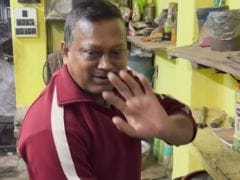Dal Cooking Tips: Making dal looks super simple, right? Just wash it, pressure cook it, add a tadka and devour. But even a small, basic mistake can change the final output. If you have ever cooked dals just to find them to be undercooked or don't turn as soft as your mother's, then you might be making one very common yet underrated mistake, which is adding salt too early. It's a habit most of us don't doubt since it just adds everything to the pressure cooker. But ask any experienced chef or even your mother, and they will ask you to skip this step for delicious home-cooked dals. It isn't cooking, but food science. So, if you have been pressure cooking dal with salt, let's find out why you need to ditch this practice to get melt-in-mouth dal every time.
Also Read: Dal Farra Recipe: North Indian Steamed Dumpling For A Healthy Snack
So, Why Should You Add Salt To Dal Later?
Photo: Pexels
When you add salt too early to dal, it actually toughens it. Adding salt before pressure cooking dals slows down the breakdown of the outer layer of the pulses. This means your dal might take longer to cook or may also remain a bit firm even after multiple whistles. When you add salt after cooking, it mixes easily into soft grains without ruining their texture. This especially applies to dals, which are already dense and require a little more cooking time. If you want that soft and thin consistency that works great with ghee, wait until the pressure releases and then add salt to your dal.
Does This Apply To All Types Of Dals?
Not exactly. Harder dals like toor, chana, and masoor benefit the most from being cooked without salt in the beginning. This way, they soften faster and evenly. On the other hand, if we look at moong dal, it is naturally soft and cooks quickly even with salt. So, if you are using yellow moong for khichdi or light dal, a little bit of salt won't make much difference. But if you are cooking heavier dals that you want perfectly mushy, skipping salt during pressure cooking is a smarter move.
How To Cook Perfect Dal Every Time
1. Soak The Dal
Soaking dals like toor and chana for at least 30 minutes cuts down cooking time and gives them a creamier texture.
2. Use Hot Water
If you add hot water instead of cold water before pressure cooking, it can help maintain consistent cooking heat.
3. Don't Overcrowd
While using a pressure cooker, make sure not to overcrowd it. Leave enough space for steam to circulate, or you'll have unevenly cooked dal.
4. Mash After Cooking
Once pressure is released and the dal is soft, mash it before adding salt. This way it'll absorb flavours in a better way.
Also Read:These Delicious Sides Are Going To Transform Your Plain Dal Chawal
5. Finish With Ghee Tadka
Once you are done pressure cooking your dal, add a delicious tempering of ghee, jeera, garlic and hing at the end. This would add a delicious flavour to your dal and make it even more irresistible!
For some easy dal recipes to make at home, click here.
